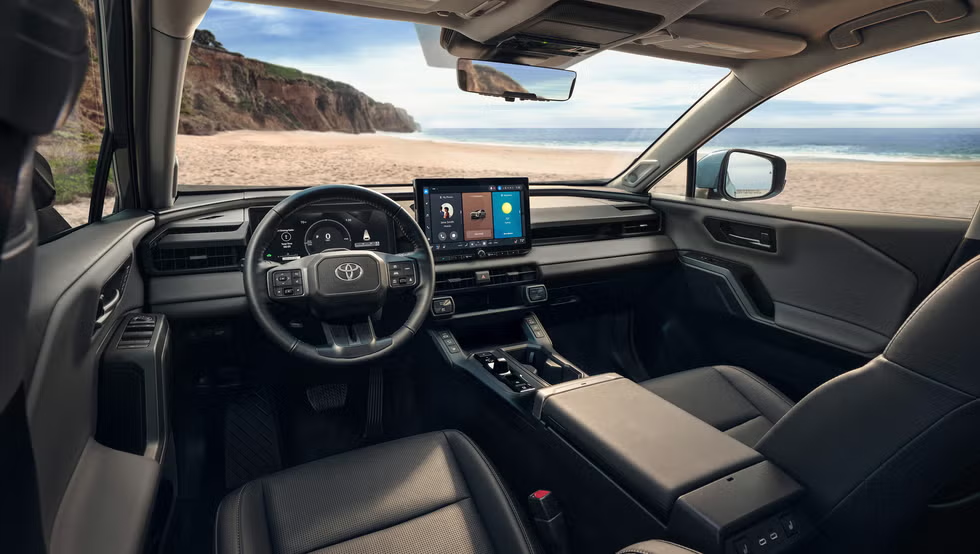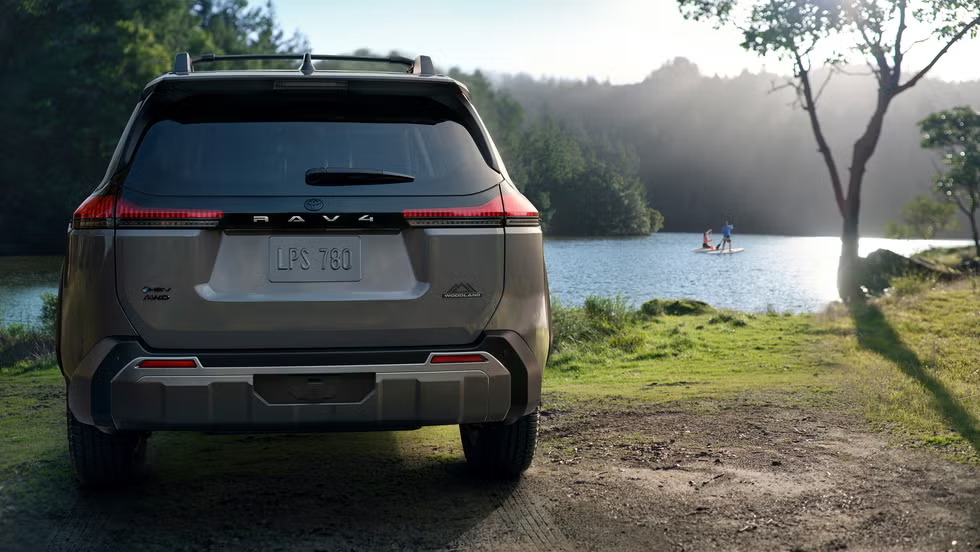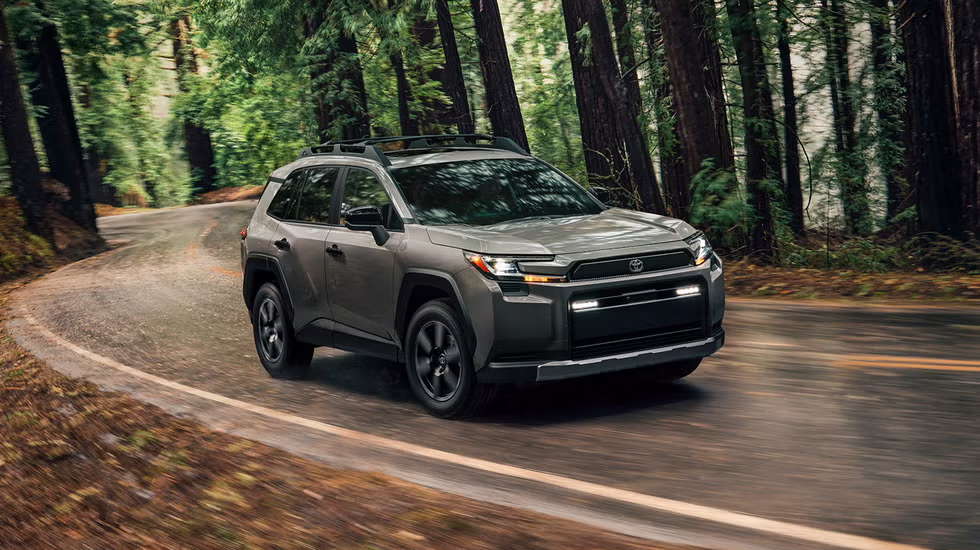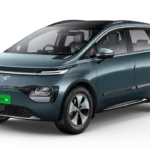Imagine a world where one of America’s favorite SUVs ditches gasoline entirely, embracing a future powered by hybrid technology. That’s exactly what’s happening with the 2026 Toyota RAV4. As one of the best-selling compact SUVs in the United States, the RAV4’s shift to a hybrid-only lineup marks a bold step toward sustainability and innovation. Toyota, a pioneer in hybrid vehicles, is doubling down on its legacy with this move, signaling a seismic shift in the automotive landscape. Buckle up as we dive into the details of this exciting transition, exploring its history, specs, design, and what it means for you and the industry.
A Brief History of the Toyota RAV4
The Toyota RAV4 first hit the scene in 1994, blending rugged utility with everyday practicality. Short for “Recreational Active Vehicle with 4-wheel drive,” it quickly became a go-to choice for drivers seeking reliability, versatility, and affordability. Over the decades, the RAV4 evolved from a quirky compact crossover to a refined family hauler, consistently ranking among the top-selling vehicles in its class. By 2023, it was the fourth best-selling vehicle in the U.S., trailing only full-size pickup trucks.
Toyota’s hybrid expertise dates back even further, with the Prius debuting in 1997 as the world’s first mass-produced hybrid car. That legacy paved the way for hybrid options across Toyota’s lineup, including the RAV4 Hybrid, introduced in 2016. Now, with the 2026 model, Toyota is taking the leap to eliminate gas-only variants entirely, offering only hybrid electric vehicle (HEV) and plug-in hybrid electric vehicle (PHEV) powertrains. It’s a testament to the company’s commitment to electrification and a greener future.
The 2026 RAV4 Hybrid-Only Lineup: Power and Efficiency
So, what’s under the hood of the 2026 Toyota RAV4? This hybrid-only transition brings two electrified powertrain options, each balancing performance with eco-conscious design.
Hybrid Electric Vehicle (HEV)
The standard hybrid model pairs a 2.5-liter four-cylinder engine with electric motors. For front-wheel-drive (FWD) versions, expect a combined output of 226 horsepower, while all-wheel-drive (AWD) models bump that up to 236 horsepower. This setup uses Toyota’s signature Hybrid Synergy Drive, seamlessly switching between gas and electric power for optimal efficiency. Compared to the outgoing gas-only RAV4, which delivered around 27 MPG city and 35 MPG highway, the hybrid promises significant fuel savings—potentially exceeding 40 MPG combined—while cutting emissions substantially.
Plug-In Hybrid Electric Vehicle (PHEV)
For those craving more power and electric range, the RAV4 PHEV steps up with a robust 320 horsepower. This variant builds on the hybrid system with a larger battery pack, offering an electric-only driving range likely exceeding 40 miles (based on the current RAV4 Prime’s 42-mile benchmark). You can plug it in to charge, making it ideal for short commutes on pure electric power, with the gas engine kicking in for longer trips. It’s a versatile option that slashes fuel costs and tailpipe emissions even further.
Both powertrains reflect Toyota’s mastery of hybrid tech, delivering smooth acceleration, quiet operation, and a guilt-free driving experience. Whether you’re navigating city streets or hitting the highway, the 2026 RAV4 promises efficiency without sacrificing the SUV’s signature capability.
Design and Features: A Refreshed RAV4

The 2026 RAV4 isn’t just about what’s under the hood—it’s getting a makeover, too. Toyota is giving the exterior a rugged, adventurous vibe, with sharper lines, a bolder grille, and enhanced off-road accents. Think chunkier bumpers and a stance that screams exploration, especially on trims like the Woodland hybrid.
Inside, the cabin steps up with a redesigned dashboard and cutting-edge tech. A larger infotainment touchscreen—likely 10 inches or more—takes center stage, paired with wireless Apple CarPlay and Android Auto. Expect premium materials, improved sound insulation, and a suite of driver-assist features like adaptive cruise control, lane-keeping assist, and automatic emergency braking, all standard under Toyota Safety Sense.
Trim Levels and Options
The 2026 RAV4 offers a range of trims to suit different tastes:
- HEV Trims: LE, XLE, Limited, and Woodland hybrid, with the latter tailored for outdoor enthusiasts with all-terrain tires and a lifted suspension.
- PHEV Trims: SE, XSE, Woodland, and GR SPORT, the last boasting sporty styling and performance tweaks inspired by Toyota’s Gazoo Racing division.
From budget-friendly base models to loaded luxury variants, there’s a RAV4 for every driver, all unified by hybrid power.
Why Hybrid-Only Matters: Benefits and Implications
Switching to a hybrid-only lineup isn’t just a gimmick—it’s a game-changer. Here’s why:
Environmental Impact
Hybrids burn less fuel and emit fewer greenhouse gases than traditional gas vehicles. With climate concerns mounting, the 2026 RAV4 aligns with global efforts to reduce carbon footprints. The PHEV option takes it further, offering zero-emission driving for daily errands.
Fuel Savings
With gas prices fluctuating, the RAV4’s hybrid efficiency could save drivers hundreds annually. The PHEV’s electric range adds even more value, especially for those with access to charging.
Industry Trends
Toyota’s move reflects a broader shift toward electrification. As governments tighten emissions regulations and consumers demand greener options, automakers are pivoting away from fossil fuels. The RAV4’s hybrid-only stance positions Toyota as a leader in this transition, ahead of rivals still clinging to gas-only models.
Pricing and Availability
There’s a catch, though: hybrids typically cost more upfront. The 2026 RAV4 may start a few thousand dollars higher than its gas-only predecessor, potentially around $30,000 for the base HEV and $40,000+ for the PHEV. However, federal tax credits (up to $7,500 for PHEVs) and long-term fuel savings could offset the premium. Availability might also tighten initially as Toyota ramps up hybrid production, so early adopters may need patience.
What This Means for the Future

The 2026 Toyota RAV4 hybrid-only news isn’t just about one SUV—it’s a signal of where the industry is headed. Toyota’s bold bet on hybrids bridges the gap between traditional engines and full EVs, offering a practical, accessible step toward sustainability. As battery tech improves and charging infrastructure grows, we might see the RAV4 evolve into a fully electric model by the 2030s. For now, this hybrid leap keeps Toyota ahead of the curve, appealing to eco-conscious buyers without alienating those wary of pure EVs.
For consumers, it’s a win-win: better fuel economy, lower emissions, and the same RAV4 reliability they’ve trusted for years. For the market, it’s a wake-up call—expect competitors like Honda (CR-V) and Ford (Escape) to accelerate their own hybrid plans.
Final Thoughts
The 2026 Toyota RAV4 hybrid-only lineup is more than a model refresh—it’s a statement. By blending cutting-edge hybrid tech with a rugged redesign and versatile trims, Toyota is redefining what a compact SUV can be. Whether you’re drawn to the efficiency of the HEV or the power of the PHEV, this RAV4 promises to deliver. As the automotive world races toward an electric future, Toyota’s hybrid mastery ensures the RAV4 remains a top contender. So, are you ready to plug in—or just enjoy the ride? The choice is yours, and it’s never been greener.
2026 Toyota RAV4 Specifications
| Specification | RAV4 Hybrid (HEV) | RAV4 Plug-In Hybrid (PHEV) |
|---|---|---|
| Powertrain | 2.5L 4-cylinder + electric motors | 2.5L 4-cylinder + electric motors (plug-in) |
| Total Horsepower | 226 hp (FWD) / 236 hp (AWD) | 320 hp |
| Drivetrain | Front-Wheel Drive (FWD) or All-Wheel Drive (AWD) | All-Wheel Drive (AWD) |
| Fuel Economy (Combined) | ~40 MPG (est.) | ~38 MPG (gas + electric, est.) |
| Electric-Only Range | N/A | 42+ miles (est.) |
| Battery Type | Nickel-Metal Hydride (NiMH) | Lithium-Ion |
| Charging Time (Level 2) | N/A | ~2.5 hours (est.) |
| Transmission | Electronically Controlled CVT | Electronically Controlled CVT |
| 0-60 MPH | ~7.8 seconds (est.) | ~5.7 seconds (est.) |
| Trim Levels | LE, XLE, Limited, Woodland Hybrid | SE, XSE, Woodland, GR SPORT |
| Base Price (est.) | ~$30,000 | ~$40,000 |
| Cargo Space (Rear Seats Up) | 37.6 cu. ft. | 33.5 cu. ft. (due to larger battery) |
| Ground Clearance | 8.1 inches (Woodland: 8.4 inches) | 8.1 inches (Woodland: 8.4 inches) |
| Infotainment Screen | 10-inch touchscreen (est.) | 10-inch touchscreen (est.) |
| Safety Features | Toyota Safety Sense (Adaptive Cruise, Lane Keep, AEB) | Toyota Safety Sense (Adaptive Cruise, Lane Keep, AEB) |
| Towing Capacity | 1,750 lbs | 2,500 lbs |
| Wheel Size | 17-inch (LE) to 19-inch (Limited) | 18-inch (SE) to 19-inch (GR SPORT) |
Notes:
- Fuel Economy: HEV estimate based on current RAV4 Hybrid’s 41/38 MPG (city/highway). The PHEV estimate is based on RAV4 Prime’s 38 MPG combined and 94 MPGe in electric mode.
- Electric Range: PHEV range projected to exceed 42 miles, aligning with news of enhanced capabilities.
- Pricing: Estimated based on current RAV4 Hybrid ($31,725 base) and Prime ($43,675 base), adjusted for hybrid-only shift and inflation.
- Performance: PHEV’s 320 hp and 0-60 times estimated from current models (7.8s for HEV, 5.7s for Prime).
- Availability: Production may limit initial supply; check with dealers for 2026 model availability.



